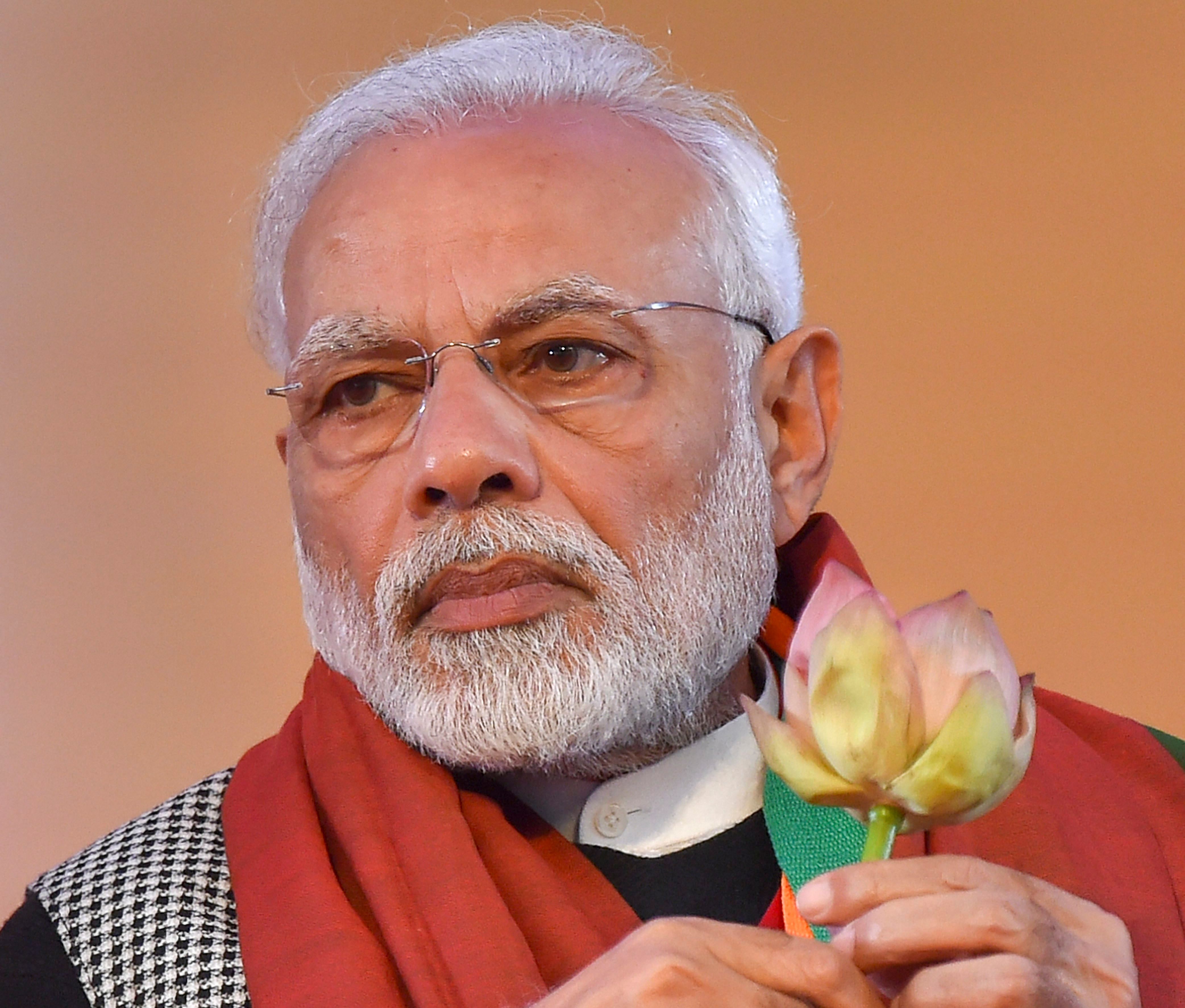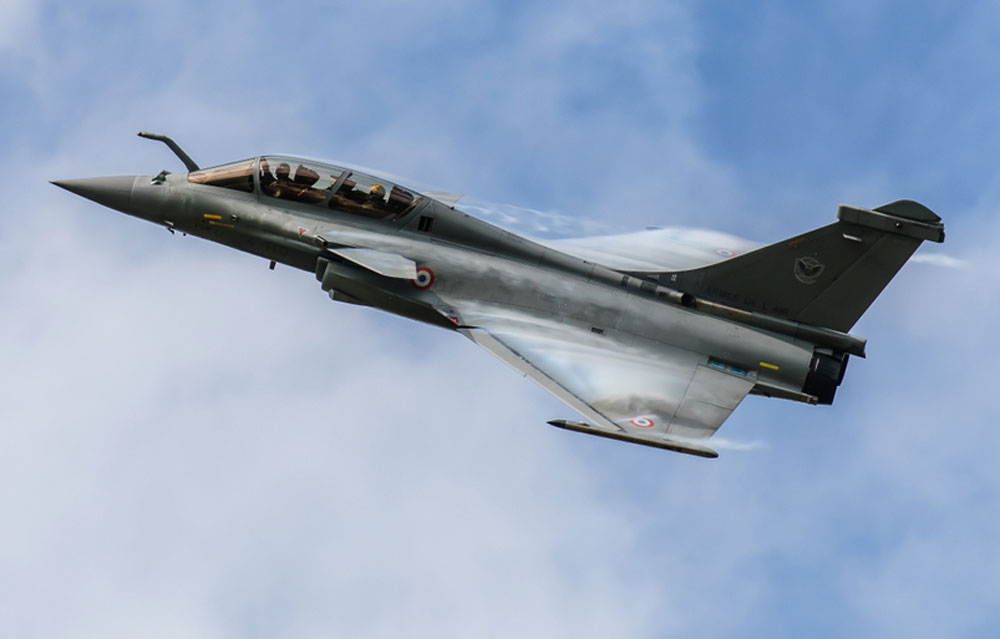The Rafale scandal has exploded back in the face of Narendra Modi with a news report attributing a leap in the price of each fighter to the Prime Minister’s “out-of-the-blue” decision to buy 36 planes instead of the 126 planned initially.
The Hindu newspaper’s report confirms some of the charges the Opposition, including Rahul Gandhi, have been levelling.
The defence ministry said: “The article is factually inaccurate. It does not adduce any new argument.” The BJP cited what it calls a “clean chit” from the Supreme Court to rubbish fresh questions.
But the newspaper and the journalist who wrote the report hold considerable significance — as well as symbolism — that will make it difficult for the BJP to dismiss it outright in a convincing manner.
Over three decades ago, the same newspaper had published several reports on the Bofors defence deal that made the name of the gun a synonym for corruption scandals in India.
The political damage Bofors wreaked on Rajiv Gandhi was staggering and his government badly lost the perception battle. That little could be proved in court eventually has not prevented the BJP from harking back to Bofors at the drop of a hat.
The Bofors coverage in 1988 was led by N. Ram. The same journalist, who became the newspaper’s editor-in-chief and now holds the post of chairman of the group, wrote Friday’s report on the Rafale deal.
The exhaustive report, carrying echoes of the Bofors coverage, prompted political veterans and journalists to wonder whether more disclosures were round the corner.
Some of the key pieces of information in The Hindu report on Friday were:
- The price transacted by the Modi government was 9 per cent lower for the bare-bones aircraft but 41.42 per cent higher for the fully fitted Rafale once the India-specific enhancements were taken into account. This was because the bill for the India-specific enhancements was to be spread over 36 aircraft instead of the UPA-negotiated 126.
The conclusion in itself is not new but the government has not yet revealed the break-up, saying the information is classified. The Hindu, which took care not to reveal technical details, attributed the information to “official documentation” and “the government’s notes on the decision-making process submitted to the Supreme Court of India and shared with a group of petitioners in compliance with the court’s orders”.
On Friday, Congress leader P. Chidambaram told a media conference: “Why did the government reject the air force’s demand for 126 fighter aircraft and decide to buy only 36? The air force asked for 13 India-specific enhancements (ISE). The negotiated price was 1,300 million euros that would have had to be paid under both the UPA-negotiated and NDA-negotiated deals. The twist in the story is over the amortisation or recovery by Dassault of the cost of the ISE.
“Under the UPA-negotiated deal, it would have been spread over 126 aircraft. Under the NDA-negotiated deal, it will be spread over 36 aircraft.”
“Assuming one aircraft would be delivered every month, if 126 aircraft had been purchased, Dassault would have recovered 1,300 million euros over 10 years and 6 months (or a little sooner),” Chidambaram said. “If only 36 aircraft are purchased, and delivered between 2019 and 2022 as contracted, Dassault will recover 1,300 million euros in 36 months.”
He added: “Dassault gains in two ways. First, the price per aircraft, because of the ISE, would have increased by 10.3 million euros if 126 aircraft had been ordered. Under the new agreement for only 36 aircraft, the price per aircraft, because of the ISE, will increase by 36.11 million euros.
“Second, calculating the net present value of money, the 1,300 million euros that Dassault will recover (by 2022) will be much higher than the 1,300 million euros it would have recovered (by 2029 or so). This is the gift to Dassault that the NDA government gave between April 2015 and August 2016.”
- The report confirms that senior defence ministry officials had objected to the higher price compared with that negotiated by the UPA government.
- Almost every aspect of the deal was cleared by a 4-3 vote in the Indian Negotiating Team (INT).
Chidambaram said: “Never heard of a vote in the negotiating team for a defence purchase. That’s amazing.”
He added: “Out of seven, three members dissented on every vital issue. I don’t know of (any) case of such powerful dissent being overruled. Heard of majority judgments with dissents, but governments don’t function like that.”
In Parliament recently, defence minister Nirmala Sitharaman had steered clear of unequivocally confirming whether officials had raised objections to the deal. Without contesting such claims, the minister had said every member of the negotiating team had signed the proposal and that what was said during the discussions was not important.
- The newspaper report added that the then defence minister, Manohar Parrikar, had avoided clearing the deal as chairman of the defence acquisition council despite being competent to do so. Instead, he forwarded it to the cabinet committee on security, where the Prime Minister overruled the objections and cleared it.
-
The Hindu report said that pointing to a better offer from Eurofighter, the three dissenting officials had said: “(f) Issue-6. The 20 per cent discount offer of EADS (European Aeronautic Defence and Space Company) in 126 MMRCA tender was ignored. The INT should take EADS quote for 36 Rafale delivery equivalent and then compare prices.”
But the INT resolution, adopted by a 4-3 majority, asserts that “the unsolicited offer of 20 per cent by EADS in 126 MMRCA deal” was not in line with the provisions of the defence procurement procedure or the Central Vigilance Commission guidelines since it was given after the bidding had closed.
Spurred by the fresh revelations, the Congress has renewed its demand for a joint parliamentary committee probe into the Rafale deal.











